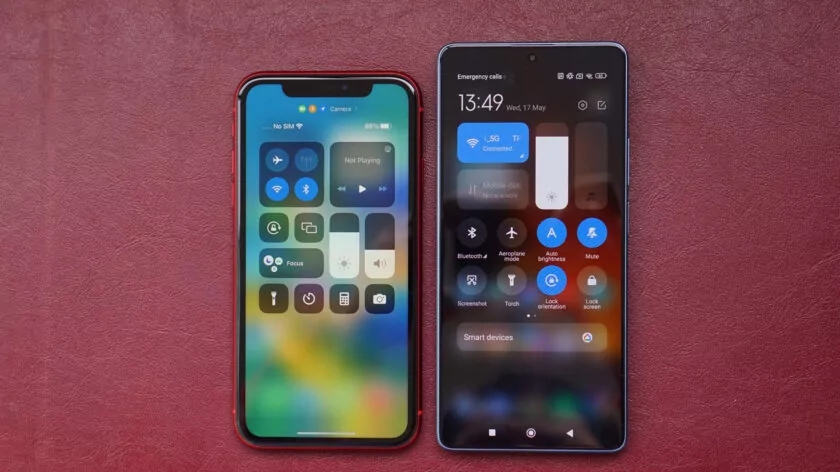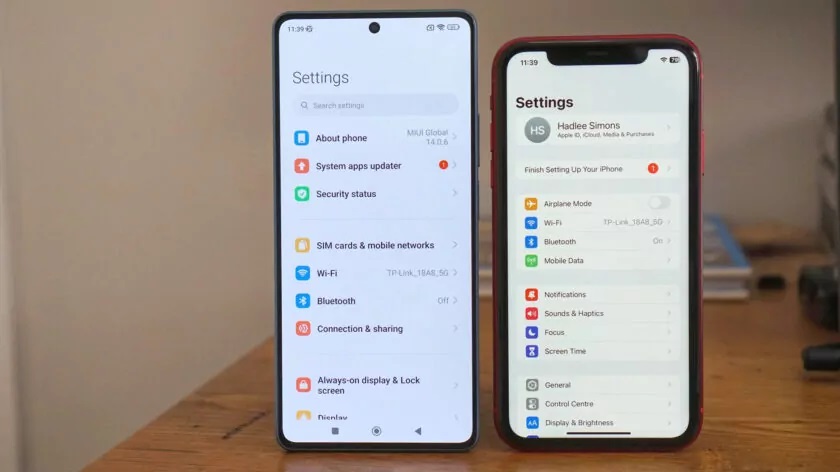Is it time for Xiaomi phones to have a new interface instead of constantly learning from the iPhone?
- Tram Ho
Why does Xiaomi still imitate the iPhone?
Xiaomi was one of many Chinese brands that weren’t afraid to copy Apple’s iOS in the early 2010s, and this was an understandable trend at the time. The company creates a familiar experience for users like using an iPhone for a cheaper price.
Xiaomi has achieved great success when its popular phone models (priced at only a few million dong), with an interface as beautiful as the iPhone, are always on the best-selling list, helping the company to be in the top. Global market.
After more than 10 years, this approach remains unchanged. Many iPhone 14 Pro users will not feel much difference if they switch to Xiaomi phones.
However, Xiaomi today is no longer a low-cost phone company like before. They have made high-end phones that are completely comparable to the top flagship models of Apple and Samsung.
So the Android interface that copies Apple’s iOS aesthetic that Xiaomi is doing is considered outdated, and needs to be changed.
There is no shortage of Chinese brands with feature-rich, distinct and intuitive Android interfaces in the global market in 2023, such as OPPO, HONOR, Motorola and vivo.

After all, being original or stylized in your own way is the way to stand out in the global marketplace. Xiaomi’s MIUI interface will also need to have a distinctive style instead of continuing to be an iOS alternative.
In addition to the overall visual style, what Xiaomi copied iOS most prominently is the Control Center area. This feature by the Chinese brand is uncanny like Apple’s product, with the same color scheme and brightness and volume sliders.
Xiaomi also adopted a settings menu very similar to iOS, with black text on a white background and similar icons. The actual settings vary between the two devices, but the overall similarities are still easy to see.
Even the MIUI camera app looks a lot like the iPhone’s camera app.
MIUI’s adherence to the overall iOS aesthetic is making its image less unique, while MIUI is one of the more feature-packed Android skins besides Samsung One UI.
Some of the favorite features on Xiaomi can include volume control per app, super wallpaper and notification light. The Xiaomi theme also helps to popularize other features such as themes, dual apps, and scrolling screenshots.
Xiaomi sets prices up to over $1,000 for the Xiaomi 13 Pro and Xiaomi 13 Ultra models, on par with the iPhone 14 Pro Max and Samsung Galaxy S23 Ultra. What user wants to buy an expensive device but the interface is influenced by other brands?
Duplicating features is often a way for brands to perfect their products and increase competition. But copying the overall aesthetic makes no sense.

Replace with a new layer of paint
There are two paths forward that Xiaomi can take if it wants to turn MIUI into a more stock Android interface. It could offer two visually distinct MIUI skins (one for global users and one for China) or make a major visual overhaul.
The first option means that each market will be tailored to its own requirements. However, this route is prone to errors and slower update rates due to distributed resources.
Xiaomi is also not the first company to offer two Android skins on the product. Vivo has provided the original operating system for Chinese users and the improved Fun Touch operating system for global users. In particular, Fun Touch OS has a very appreciated aesthetic.
A single overhauled MIUI interface for both markets could allow for faster updates and fewer bugs, since Xiaomi would theoretically not have to allocate resources like a two-pronged approach. The downside, however, is that each market may not get what it wants.
Regardless of which path Xiaomi takes, the end result will be that global users no longer have to use the same Android interface as Apple iOS.
Xiaomi cannot continue to offer an Android interface that looks like an Apple iOS inspired version if it wants to entice customers in today’s fiercely competitive market.
It must be remembered that, in addition to the interface too similar to iOS, the customized operating system and features that Xiaomi offers are very much appreciated. So, it’s time for Xiaomi to turn one of its biggest weaknesses into a strength, allowing it to bring to market powerful phones that still have their own personality.
Source : Genk
